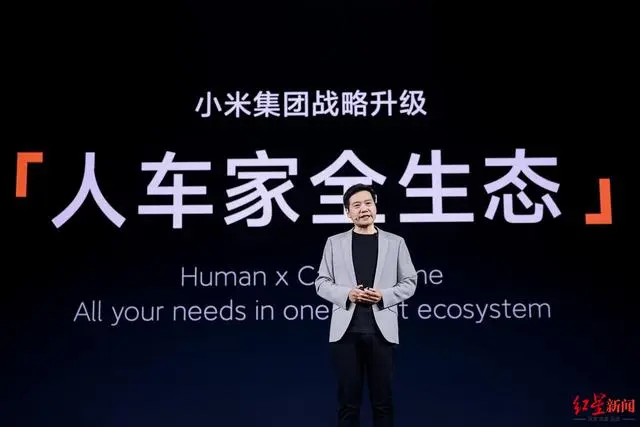On October 26, Xiaomi Group held a product launch conference.
Lei Jun, the Chairman and CEO of Xiaomi Group, announced that Xiaomi has reached a “milestone moment” today. He formally unveiled Xiaomi Group’s new strategy – evolving from the previous “Smartphone × AIoT” to “Integrated Ecosystem for People, Cars, and Homes”. Central to this new strategy is the HyperOS (Xiaomi HyperOS).
Lei Jun explained the reason behind naming the system “Hyper”: “Hyper” symbolizes a free-flowing momentum, representing the booming development of new technologies, converging into a beautiful new world.
The domestic version will be released in December.
Lei Jun mentioned that the HyperOS is an unprecedented system-level reconstruction. Xiaomi’s journey has always been an exploration in operating system development. In early 2022, Xiaomi decided to unify the software architectures of MIUI, Vela, Mina, and Car OS. After two years of refinement, Xiaomi’s underlying operating system integration was completed, with over 5,000 people involved in the R&D.
It was understood that from the inception of HyperOS’s architecture design, five objectives were set:
- Every standalone device achieves optimal performance.
- More efficient cross-device connectivity.
- Serve as the intelligence hub of the ecosystem, providing proactive intelligent services to users.
- Ensure comprehensive system-level privacy and security across devices, offering a more efficient connection.
- Commit to building an open ecosystem.
How to interpret these goals? Regarding cross-device connectivity, through HyperOS, each terminal can seamlessly integrate. For example, content copied on a phone can be pasted on a computer. In terms of proactive intelligence, it can leverage the vast IoT device ecosystem to perceive and then understand and deliver services, like watching TV and ordering food delivery. Without constantly checking phone updates, the latest news from the delivery person is directly synchronized to the TV screen. Additionally, AI’s large model capabilities are fully embedded in HyperOS, enabling smarter photo editing and more.
When will HyperOS be rolled out? The Xiaomi 14 series will be the first to have the stable version of HyperOS. For other devices, the first batch of the domestic version (including phones, tablets, TVs, watches, speakers, and cameras) will release the official version of HyperOS in December. The first batch of international devices will start rolling out in the first quarter of 2024.
Xiaomi 14 vs. iPhone 15 Pro
Before the launch, Lei Jun hinted on Weibo that the Xiaomi 14 is “remarkably stronger” than its predecessor. At the event, Lei Jun even mentioned that the Xiaomi 14 is not just comparable to the iPhone, but it’s even on par with the iPhone 15 Pro.
Reporters noted significant upgrades in the Xiaomi 14 series, including a partnership with TCL for a new low-power consumption screen. The Xiaomi 14 Pro even introduced a full deep micro-curved screen, which Lei Jun described as “stunning”. To protect this screen, the Xiaomi 14 Pro also innovatively uses the most durable “Dragon Crystal” glass ever used by Xiaomi, improving its drop resistance tenfold.
Price-wise, the Xiaomi 14 starts at 3999 yuan, and the Xiaomi 14 Pro starts at 4999 yuan. A special titanium edition was also launched, priced at 6499 yuan. Lei Jun mentioned that setting the price was challenging, “A 3999 yuan premium model will be the last of its kind. I hope our fans understand.”
Though the Xiaomi car was not showcased, Lei Jun previously mentioned on Weibo that the progress of the Xiaomi car is going smoothly and will officially launch in the first half of next year. “When the time is right, we will provide a comprehensive update.”
The smartphone market is slowly recovering, with more fierce competition. Domestic data from Canalys shows that in the third quarter, China’s smartphone shipments decreased by 5% year-over-year to 66.7 million units. Honor reclaimed its top position with 18% market share, followed by OPPO (including OnePlus) in second, Apple in third, and Vivo in fourth. Xiaomi’s market share slightly increased to 14%, ranking fifth. With the launch of the eye-catching Mate series, Huawei’s market share continues to grow, closing in on the top five.
On a global scale, Canalys data for the third quarter indicates a 1% year-over-year decline in smartphone shipments, but a double-digit quarter-over-quarter growth. Samsung continues to lead with 20% market share, Apple follows at 17%, and Xiaomi is third with 14%, with both year-over-year and quarter-over-quarter shipments seeing a recovery.
